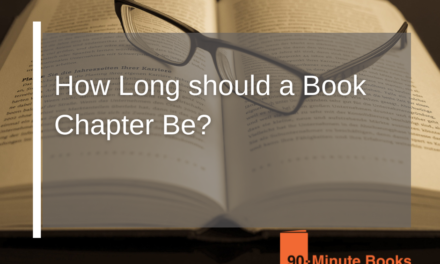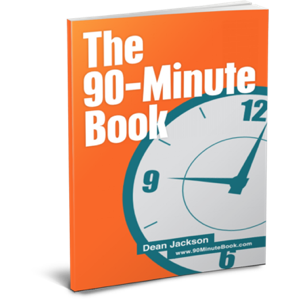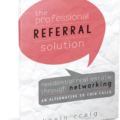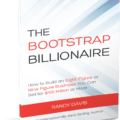The term “self-publishing” is all the rage right now. Several books have been doing very well lately. Interestingly, a traditional publisher did not publish those books. Instead, they were self-published. A few examples that come to mind include E.L. James’ “Fifty Shades of Grey,” Rupi Kaur’s “Milk and Honey,” Andy Weir’s “The Martian,” and Ashwin Sanghi’s “The Rozabal Line” are all popular novels.
If you believe self-publishing is only for poorly written books and books that are only popular at airports, let me stop you. Some of the books today considered to be literary classics have been self-published. This proves that self-publishing has been around for a long time. Are you surprised? Let’s look at two examples from a long list. The publishers were not interested in publishing “Swann’s Way” because they didn’t think it would be profitable. Proust did not let that bog him down. He published it himself. After the book’s initial success, the publishing company decided to publish the rest of the series. Beatrix Potter’s next book, “The Tale of Peter Rabbit,” was self-published after being rejected by publishers. Why? Because they didn’t believe that women could write. How wrong they were!
Advantages of Self-publishing
The benefits of self-publishing are that you retain control of your work, publish faster than traditional publishers, and keep more profits.
- You get complete creative control: With self-publishing, the author has complete control over the publishing process. The author has no say in the final cover design, title, blurb, and distribution in the marketplace with traditional publishing. But self-publishing does. The author is the center of the publishing process.
- The royalty rate you receive is higher from traditional publishers than from self-publishing, where you would only receive a 10% royalty. Publishing houses choose to invest in authors who will generate income. And this funds the publishing house. This means that the author does not get to keep all the money they make from their work. Self-publishing offers nearly 100% of profits. The author pays the team upfront, so the team does not have to wait for royalty profits.
- You pick your team: In traditional publishing, the publisher is responsible for choosing the team working on your book. The publisher’s allocation of resources to your book may be based on availability rather than merit. In self-publishing, you can choose your own publishing team, which means you can be confident that your book is in good hands.
- You decide the deadlines: Publishers who operate under traditional models are pressured to adhere to set schedules. If the editing process takes longer than anticipated, it is causing stress for those involved. This situation does not arise in self-publishing.
- The traditional publishing workflow can take a long time- anywhere from a year to three years for a book to be on the shelves from the time you sign the contract. A quicker publishing workflow can help you get your book out faster. Compared to traditional publishing, self-publishing offers a shorter timeline. This timeline varies depending on your specific goals.
- When you self-publish, you retain your intellectual property. You keep the copyright to your work when you self-publish, which means you retain full control of your intellectual property. It can be fine in the short term. If the publishing house you sell the copyright to for your book goes out of business, or the editors quit, you might have some problems if you don’t have the copyright. This scenario is not likely to occur in self-publishing as you would retain full copyright to your work.
- You can explore your dream genre: If your book does not fit into traditional publishing genres, they may reject it. However, this does not occur in self-publishing. No matter what genre you write in, you can find a publisher for your work.
- You are paid more frequently when you self-publish: you receive payments either once or twice a year, as opposed to once a quarter at a traditional publishing firm. With self-publishing, you can get monthly royalty payments, which is not the case with traditional publishing.
- You avoid the gatekeepers: If you want to be published by a traditional publishing company, you need to get the permission of the person who controls what gets published. The person deciding which books get published and which do not is an intern, editor, or publisher. This gatekeeper is responsible for finding manuscripts that fit the publishing house’s criteria and budget. If you self-publish, you will avoid this process altogether.
Disadvantages of Self-publishing
You have seen the pros of self-publishing. And indeed, they are many. There are, however, some disadvantages to this issue. There are several things you should be aware of before you make the decision to self-publish.
1. You have less support: You will have to shoulder more responsibility than a regular author published by a traditional publisher. This also means that you will have less support from others.
2. To succeed in your career, you must be creative and innovative. You will not have an editor watching your back; you need to make deadlines and meet them, and you are your own boss.
3. Unlike traditional publishing, self-publishing will require you to invest more money upfront. Mainly you need to spend money right away.
4. Sometimes, you might experience stigma because of your condition. You may have to deal with stigma from others due to your condition. Self-publishing has indeed come a long way. The stigma associated with it is still present. reviewers might mention the book’s marketing campaign in their reviews
The pros of self-publishing outweigh the cons if you’re a seasoned author-driven, willing to spend money, and don’t care about the stigma.
Preparing to Self-Publish a Book
Step Zero: Writing the Manuscript
Outline and Concept
Before you write the book, it is important to define an outline. It allows you to plan the project and better understand whether the book looks as good on paper as it does in your head. Divide the concept into chapters and define the scope of each chapter in bullet points.
Now is the time to make any changes to the book’s core concept. You can try out different ideas, see if your choices make sense, and change your mind while the concept is still in its early stages.
If you want to write a book, you need a foundation of at least a rough concept, whether you write it yourself or hire a ghostwriter.
Option 1: Write It Yourself
After the outline is defined, the writing process begins. The process of writing this essay is not only a test of your writing skills but also a test of your patience and perseverance. It’s not a one-time job; it’s a process. You will only be able to publish a book if you are a consistent writer, regardless of how easy the publishing process may be.
You should write the book yourself if you can handle the pressure and successfully deliver.
Option 2: Hire a Professional Writer
Regularly producing text is necessary, as well as having the skill to turn it into a book that people would find enjoyable and worth spending money on. If you don’t have the time or the skill to write a book, the second option is to hire a ghostwriter.
It is important to remember that even if you have outsourced the writing, the book will still be yours. You are responsible for what goes on in your book. You have to be involved with the ghostwriter and give feedback during the writing process to ensure the finished product is what you wanted it to be. It is important to have a written definition of the concept so that it can be used as an outline.
Step One: Book Editing and Book Proofreading
After you have written a draft of your book, the next step is to make it presentable for publishing. The first version of something is never the one that ends up being published or sold. Read the manuscript from the beginning and make changes along the way. Then read it once again. Look at it closely. Research the details, add facts where necessary, and remove any unnecessary information.
Revise Your Draft Multiple Times
A good way to tell if you have thoroughly edited your book is if you get bored reading it multiple times. You would feel proud of your accomplishment and be confident sharing it with others.
Outsourcing
If you have little to no writing experience, it is a good idea to hire an editor for help. There are many editors and proofreaders available on freelancing websites. The editors charge a small fee to fix your writing, grammar, and flow.
If you want a more professional level of editing, look for professional editing services online, like Ghostbookwriters. They charge according to their level of expertise. But the results can be well worth it.
A professional editor can take your book and turn it into something great. The feedback that you receive from professional proofreaders and editors can be very beneficial because this is something that they do for a living. An editor can help improve your manuscript by catching errors you may have missed.
Step Two: Choosing a Self-Publishing Method
Now that the manuscript is final and ready, you need to start making it look less like a journal and more like a book. After the text is edited and finalized, the next step is to format it for publication. This includes adding the front and back matter, designing a cover, and converting it from DOC or DOCX format to an ebook file format.
How you carry out all the necessary tasks for self-publishing will vary depending on your chosen method.
There are two ways to go about the self-publishing process. You can either do it yourself or hire a professional to do it for you.- Self-publish your book by submitting it to retailers yourself
- Submit it to a book aggregator company that will handle the technicalities for you
It is important for you to understand both of these options before making a decision that meets your budget and goals. Choose the option that would work best for you.
Book Retailers
When you self-publish directly through a retailer, you establish a direct connection with that retailer as an author. It is your responsibility to manage all the tasks by yourself. After you have formatted the book and made sure that you have followed all the guidelines, convert the file into the desired format. Then, upload the book and take care of all the little details yourself. The benefit of doing all the work yourself is that you don’t have to split your royalties with anyone else. So why doesn’t everyone just do it themselves?
To sell your book on multiple self-publishing platforms, you must complete all the required tasks for each retailer multiple times. Every retailer has its own specific guidelines and process for self-publishing. This is where aggregators come in. They make self-publishing more efficient, which is an appealing choice for authors.
Amazon Kindle Direct Publishing
KDP is Amazon’s self-publishing platform that is responsible for most of the ebook sales in the US. KDP has about three-quarters of the ebook market share. KDP is the biggest online marketplace for ebooks.
Remember, KDP is not the same as Amazon Publishing. KDP is a self-publishing platform, and Amazon Publishing is Amazon’s traditional publishing division.











